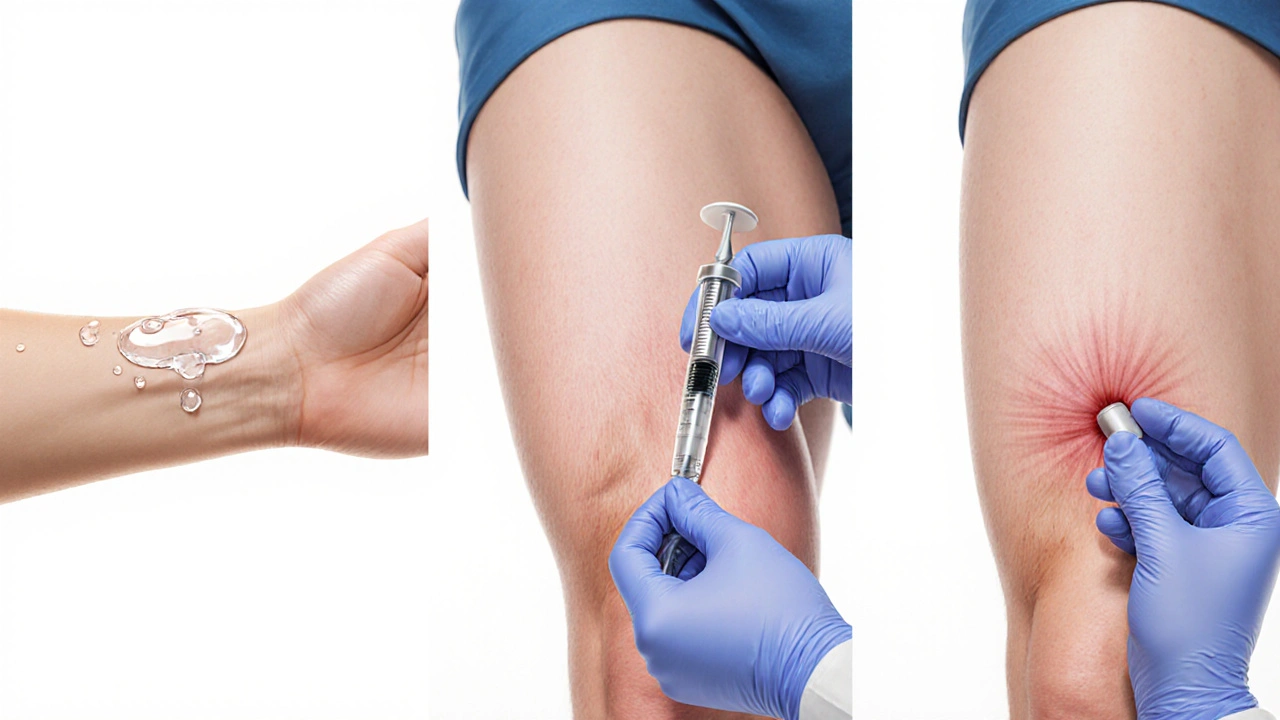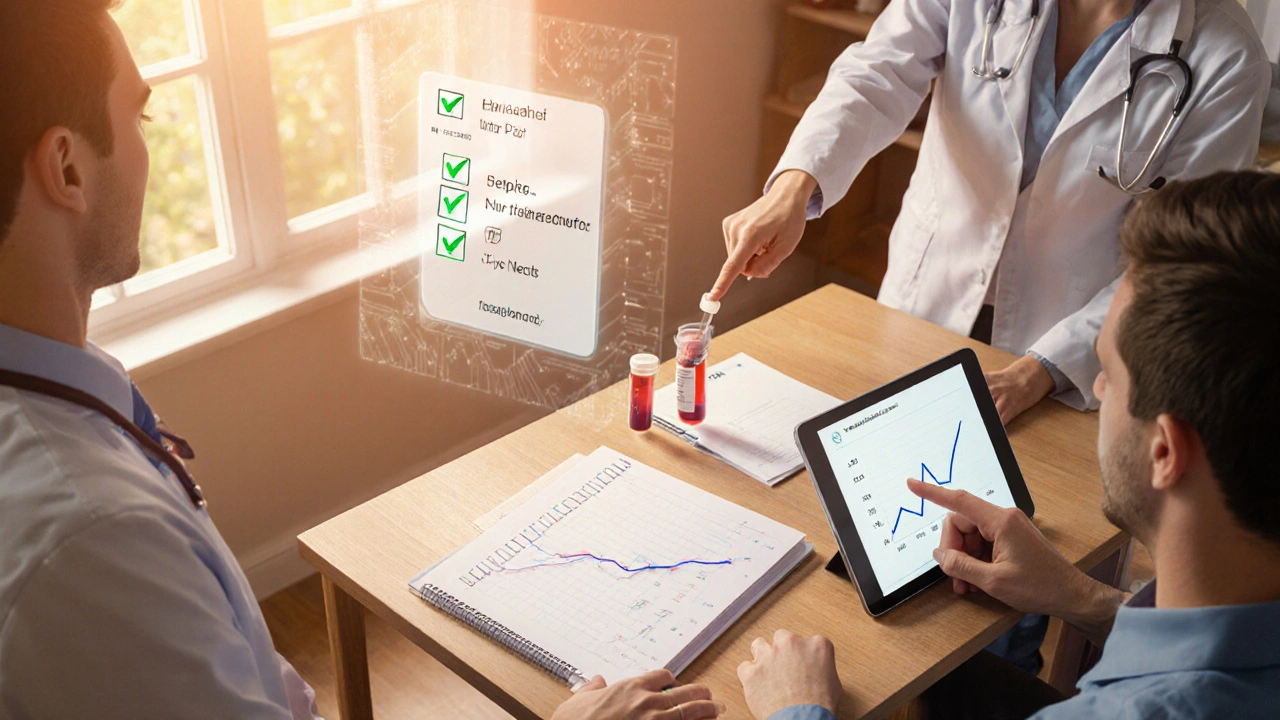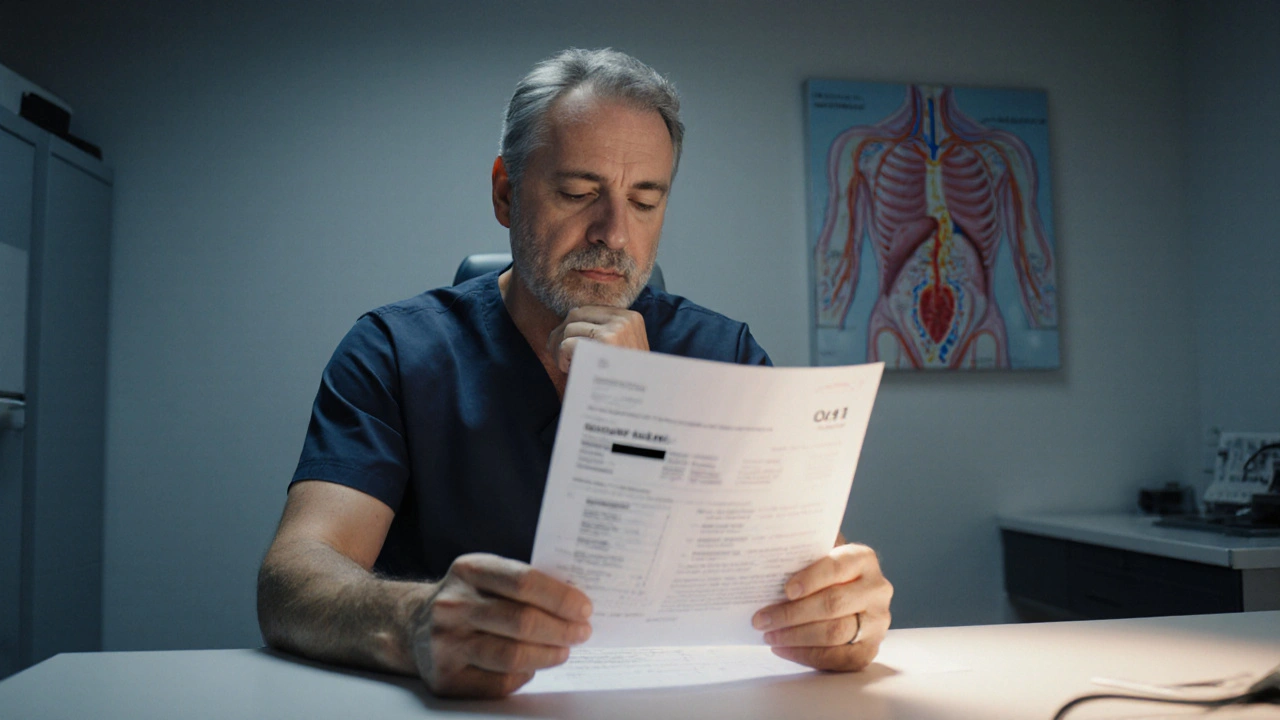Hormone Replacement Therapy Decision Guide
Assessment Result
Quick Takeaways
- Low testosterone is a common, treatable cause of impotence.
- hormone replacement therapy can restore libido and improve erections in men with documented deficiency.
- Multiple delivery methods exist - gel, injection, and pellet - each with its own pros and cons.
- Benefits must be weighed against risks such as blood clots, prostate concerns, and cardiovascular effects.
- Regular monitoring of blood testosterone, hematocrit, and PSA is essential for safe treatment.
What Is Hormone Replacement Therapy?
When a man’s body can’t produce enough sex hormones, especially testosterone the primary male hormone that drives sexual function, muscle mass, and mood, doctors may prescribe Hormone Replacement Therapy a medical regimen that restores hormone levels to a physiologic range. Though the term is often linked to menopause, HRT for men focuses on correcting low testosterone, a condition medically known as hypogonadism where the testes produce insufficient testosterone.
How Hormones Influence Erectile Function
Erections rely on a delicate dance between nerves, blood vessels, and hormones. Erectile dysfunction the inability to achieve or maintain a satisfactory erection can stem from vascular disease, nerve damage, psychological factors, or hormonal imbalance. Testosterone fuels the production of nitric oxide, a molecule that relaxes penile smooth muscle and allows blood to fill the corpora cavernosa. Without enough testosterone, nitric‑oxide synthase activity drops, leading to weaker erections and diminished libido.

When HRT Helps Impotence: Who Benefits?
Not every case of impotence responds to hormone therapy. The strongest candidates share three key traits:
- Persistent symptoms of low libido or weak erections.
- Blood tests confirming total testosterone below 300ng/dL (or free testosterone below 9ng/dL).
- Exclusion of other treatable causes (e.g., uncontrolled diabetes, severe atherosclerosis, psychological stress).
Men meeting these criteria often report noticeable improvement within 3-6weeks of starting therapy, especially when they receive a delivery method that maintains stable serum levels.
Choosing a Delivery Method: Gel, Injection, or Pellet
| Form | Typical Dose | Frequency | Peak‑to‑Trough Variation | Pros | Cons |
|---|---|---|---|---|---|
| Gel | 50‑100mg daily | Every day | Low | Steady levels, easy self‑administration | Skin irritation, transfer risk |
| Injection (intramuscular) | 100‑200mg | Every 2‑4weeks | Moderate‑high | Infrequent dosing, cost‑effective | Fluctuating levels, pain at injection site |
| Pellet (subcutaneous) | 450‑1200mg total | Every 3‑6months | Very low | Longest interval, minimal daily compliance | Minor procedure, possible pellet extrusion |
All three options deliver the same hormone, but the pharmacokinetics differ. Men who value convenience often prefer pellets, while those wary of a minor surgical procedure may opt for gels or injections.
Clinical Evidence: Does HRT Really Improve Impotence?
Several peer‑reviewed studies published between 2018 and 2023 provide a clearer picture. A 2020 randomized controlled trial involving 312 men with testosterone < 280ng/dL showed a 48% improvement in International Index of Erectile Function (IIEF) scores after 12weeks of gel therapy, compared with a 12% rise in the placebo group. Another meta‑analysis of 14 trials (total n≈2,900) reported an average increase of 4.2 points on the IIEF‑5 scale for testosterone‑treated participants-a change sufficient to shift many men from “moderate” to “mild” dysfunction.
Importantly, benefits were most pronounced in men whose baseline testosterone was < 200ng/dL and who had no significant cardiovascular disease. When testosterone levels were already near the low‑normal range, the effect on erections was modest.

Potential Risks and How to Manage Them
Like any medication, HRT carries side effects. The most frequently reported include:
- Elevated hematocrit, which can increase clot risk.
- Acne or oily skin.
- Sleep apnea worsening in predisposed individuals.
- Potential stimulation of pre‑existing prostate cancer (though large registries haven’t confirmed a causal link).
Monitoring protocols help mitigate these concerns. Guidelines recommend checking total testosterone, free testosterone, hematocrit, lipid profile, and prostate‑specific antigen (PSA) at baseline, then every 3‑6months during the first year. If hematocrit tops 54%, a therapeutic phlebotomy or dose reduction is advised.
Putting It All Together: A Practical Checklist for Men Considering HRT
- Get Tested: Have a fasting morning blood draw for total and free testosterone, plus PSA, lipid panel, and CBC.
- Rule Out Other Causes: Work with your doctor to screen for vascular disease, diabetes, medication side effects, and psychological factors.
- Discuss Goals: Clarify whether you seek improved libido, stronger erections, or both.
- Choose a Formulation: Review the comparison table and decide based on lifestyle, cost, and comfort with injections or minor procedures.
- Start Low, Go Slow: Begin with the lowest effective dose; titrate upward only if symptoms persist and labs stay within safe ranges.
- Schedule Follow‑Ups: Re‑check labs at 3‑month intervals; adjust dose or switch formulation as needed.
- Track Outcomes: Use a simple IIEF‑5 questionnaire or a personal log to gauge improvement.
- Stay Informed: Keep up with new research; guidelines evolve as larger long‑term safety studies emerge.
Following this roadmap helps maximize the chances that HRT will safely restore sexual confidence.
Frequently Asked Questions
Can testosterone therapy cure all cases of impotence?
No. HRT only helps when low testosterone is the main driver. Vascular disease, nerve damage, or psychological issues often require separate treatments.
Is it safe to combine HRT with Viagra?
Yes, many doctors prescribe both. Testosterone improves baseline erectile capacity, while PDE‑5 inhibitors like Viagra help achieve full rigidity. Always discuss dosage and timing with your physician.
How long does it take to notice a difference?
Most men report improved libido within 2‑3weeks. Noticeable gains in erection quality often appear after 6‑12weeks, depending on the delivery method.
What if my PSA rises after starting therapy?
A modest rise (≤0.5ng/mL) is common and usually not alarming. A larger jump should trigger a urologist referral for further evaluation, including possible imaging or biopsy.
Are there natural alternatives to prescription HRT?
Lifestyle changes-regular resistance training, adequate sleep, vitamin D optimization, and weight loss-can raise endogenous testosterone modestly (often 50‑100ng/dL). However, they rarely replace the boost needed for men with clinically low levels.

Jasin P.
October 9, 2025 AT 13:33Oh great, another guide promising miracle meat for your love life while ignoring the fact that most men just need a decent diet and a willingness to stop whining.
Lily Đàn bà
October 9, 2025 AT 15:13Listen up, folks! The so‑called “miracle” hormone replacement isn’t some fantasy potion brewed in a secret lab-it’s a medically‑backed tool that can, when used wisely, resurrect the spark that many modern men have lost to stress, sedentary habits and that looming cloud of self‑doubt. But don’t be fooled into thinking it’s a silver bullet; the body is a delicate orchestra, and tossing testosterone into the mix without proper tuning can lead to a cacophony of side effects-elevated hematocrit, acne, mood swings, and even potential prostate concerns. The article does a solid job of laying out the pros and cons, yet it could stress even more how lifestyle changes like weight loss, resistance training, and sleep hygiene amplify any hormonal benefit. Remember, hormones are only one piece of the puzzle; vascular health, mental wellbeing, and relationship dynamics matter just as much. If you’re considering HRT, get a thorough baseline work‑up and discuss all alternatives with a qualified urologist or endocrinologist. Only then can you decide if the trade‑off is worth it for you.
Joseph O'Sullivan
October 9, 2025 AT 16:53Ever sit down and wonder if chasing a hormone cocktail is just us trying to bottle the elusive “man‑energy” that our grandfathers seemed to have in spades? The science in the article actually nails that testosterone is the fuel for the engine of desire, but the road to better erections is paved with more than a simple injection.
Conor McCandless
October 9, 2025 AT 18:50Testosterone therapy is presented as a straightforward fix for impotence but the reality is far more complex. Low levels of this hormone can indeed dampen libido and erection quality. The body regulates hormones through a delicate feedback loop that can be disrupted by external supplementation. Different delivery methods each have their own absorption profiles and side effect spectrums. Gel offers daily consistency but requires careful skin application. Injections deliver larger spikes that may cause mood swings and mood fluctuations. Pellets sit under the skin and release slowly but demand a minor surgical procedure. Monitoring blood work is essential to catch rising hematocrit or PSA spikes early. Cardiovascular risk is a genuine concern for men with pre‑existing heart disease. Psychological factors, though, remain a major contributor to erectile dysfunction. A holistic approach that includes lifestyle changes often yields better results than hormone therapy alone. Men should discuss goals with their physician before committing. Dose titration should start low and increase only if labs remain within safe ranges. The article correctly emphasizes the importance of regular follow‑up labs. Ultimately, therapy can be beneficial when applied judiciously and under professional supervision.
kat gee
October 9, 2025 AT 20:46Sure, because a gel on your skin is far easier than just hitting the gym.
Iain Clarke
October 9, 2025 AT 22:26For anyone pondering HRT, it's worth noting that baseline labs should include total and free testosterone, PSA, lipid profile and a complete blood count. After initiating therapy, rechecking these values every three to six months helps catch potential issues early. Also, discuss lifestyle factors-weight, sleep, alcohol intake-as they can significantly influence both hormone levels and erectile function.
Courtney Payton
October 10, 2025 AT 00:06i t is important to remind men that chasing a quick fix without addressing underlying habits can lead to a false sense of safety. th e article does a good job but should stress personal responsibility more.
Muthukumaran Ramalingam
October 10, 2025 AT 01:46Honestly, reading through this whole thing feels like wading through a never‑ending brochure that tries to sound scientific while dropping buzzwords left and right, and I’m left wondering if the real solution isn’t simply cutting out the junk food, getting some sleep, and maybe talking to a therapist about stress before you start injecting yourself with something that could mess up your blood work.
Garrett Williams
October 10, 2025 AT 03:26You’ve got this, just stay consistent and check those labs.
joba alex
October 10, 2025 AT 05:06While the piece outlines standard protocols, one must consider the pharmacokinetic variance inherent in transdermal versus intramuscular vectors, especially given the hepatic first‑pass elimination rate which may render the asserted “steady state” claim somewhat overstated.
Mark Mendoza
October 10, 2025 AT 06:46Great summary! 👍 For anyone starting HRT, remember to keep a symptom diary and bring it to each appointment – it makes dose adjustments much clearer.
Dan Tourangeau
October 10, 2025 AT 08:26Make sure you understand the cost and insurance coverage for your chosen formulation before committing.
Bernard Valentinetti
October 10, 2025 AT 10:06Ah, the age‑old dilemma of hormone supplementation-indeed, the literature is replete with data, yet the practitioner must wield discernment, lest one fall prey to the siren call of unregulated “miracle” regimens!!! 🤔💊